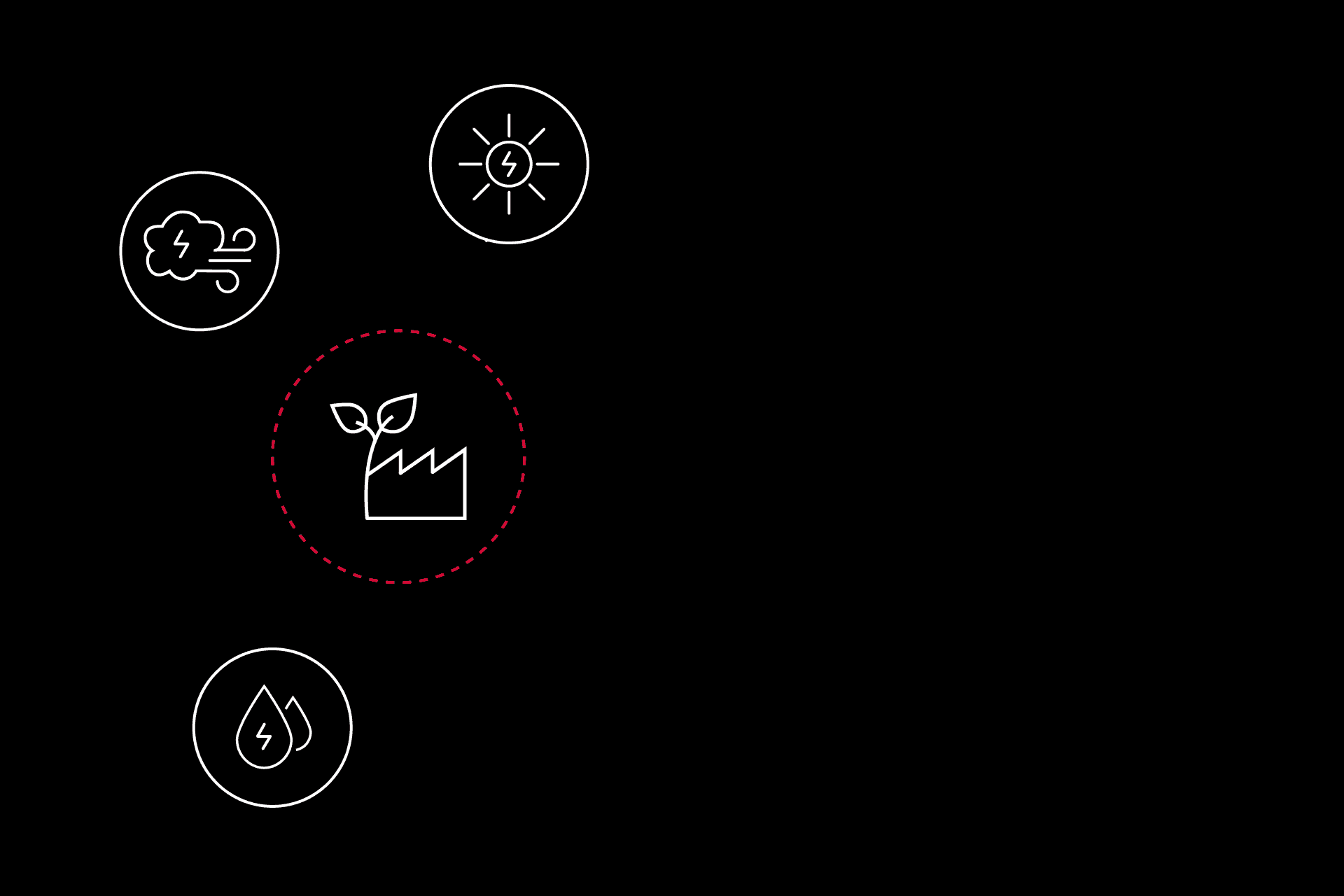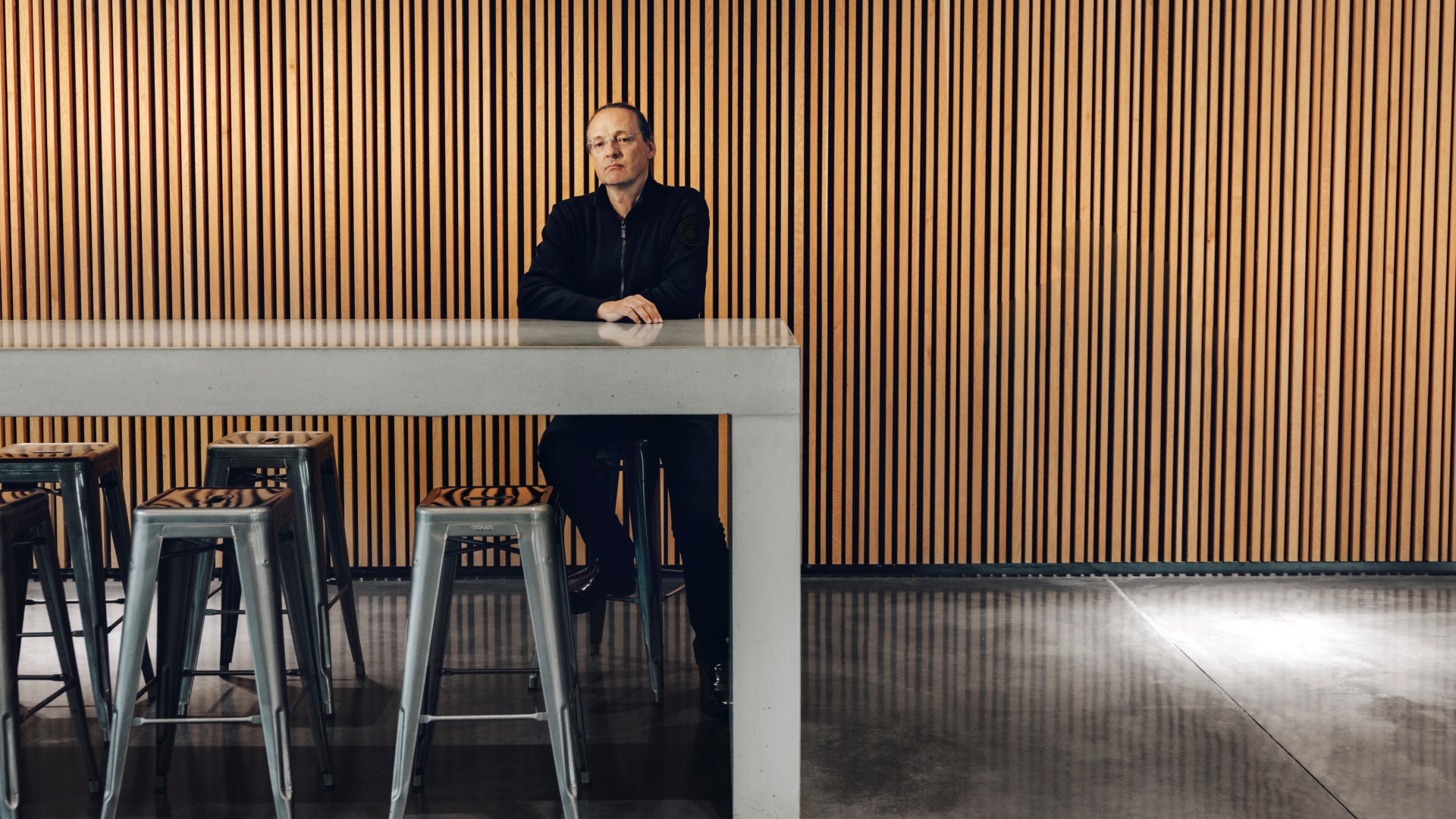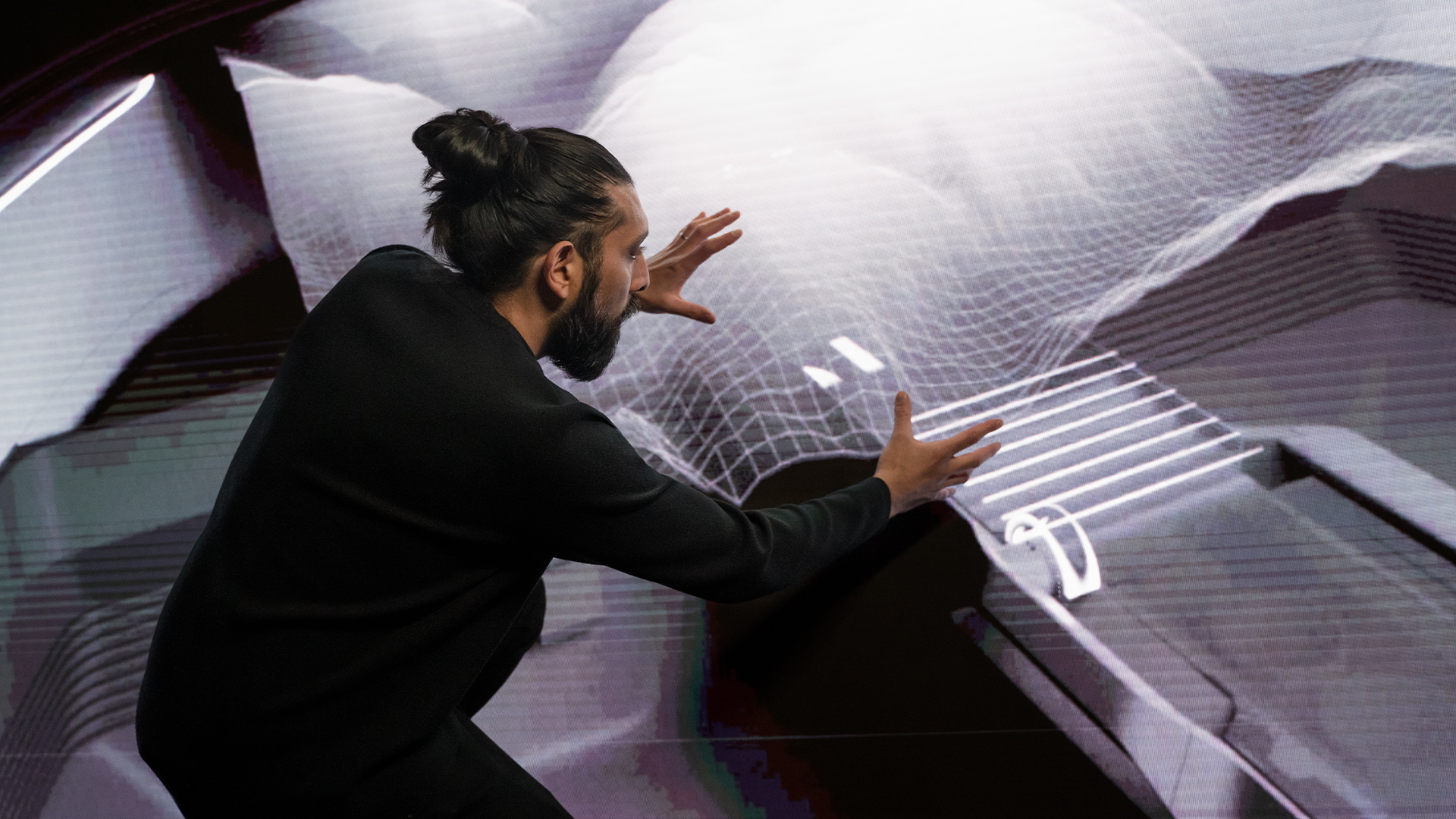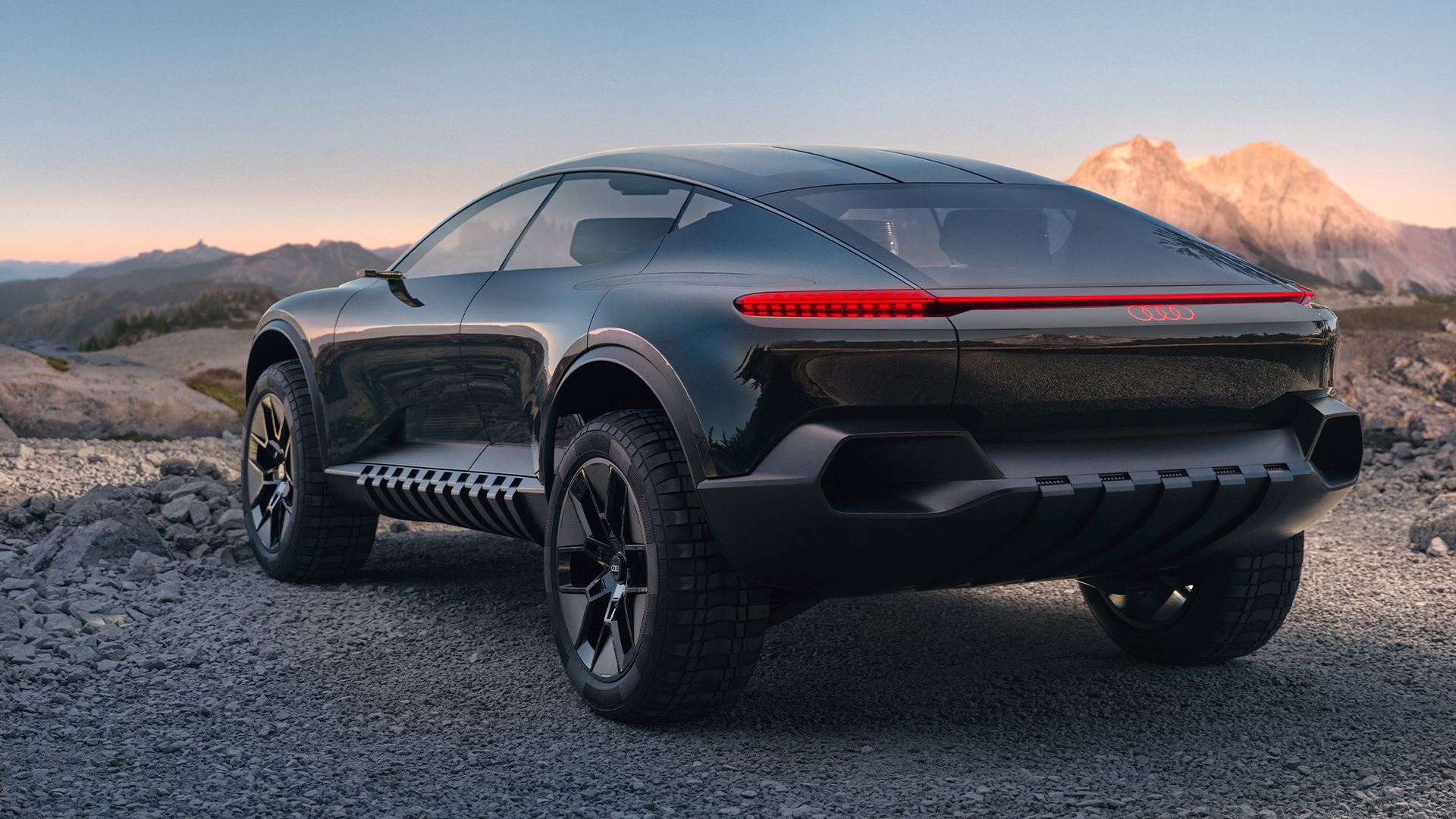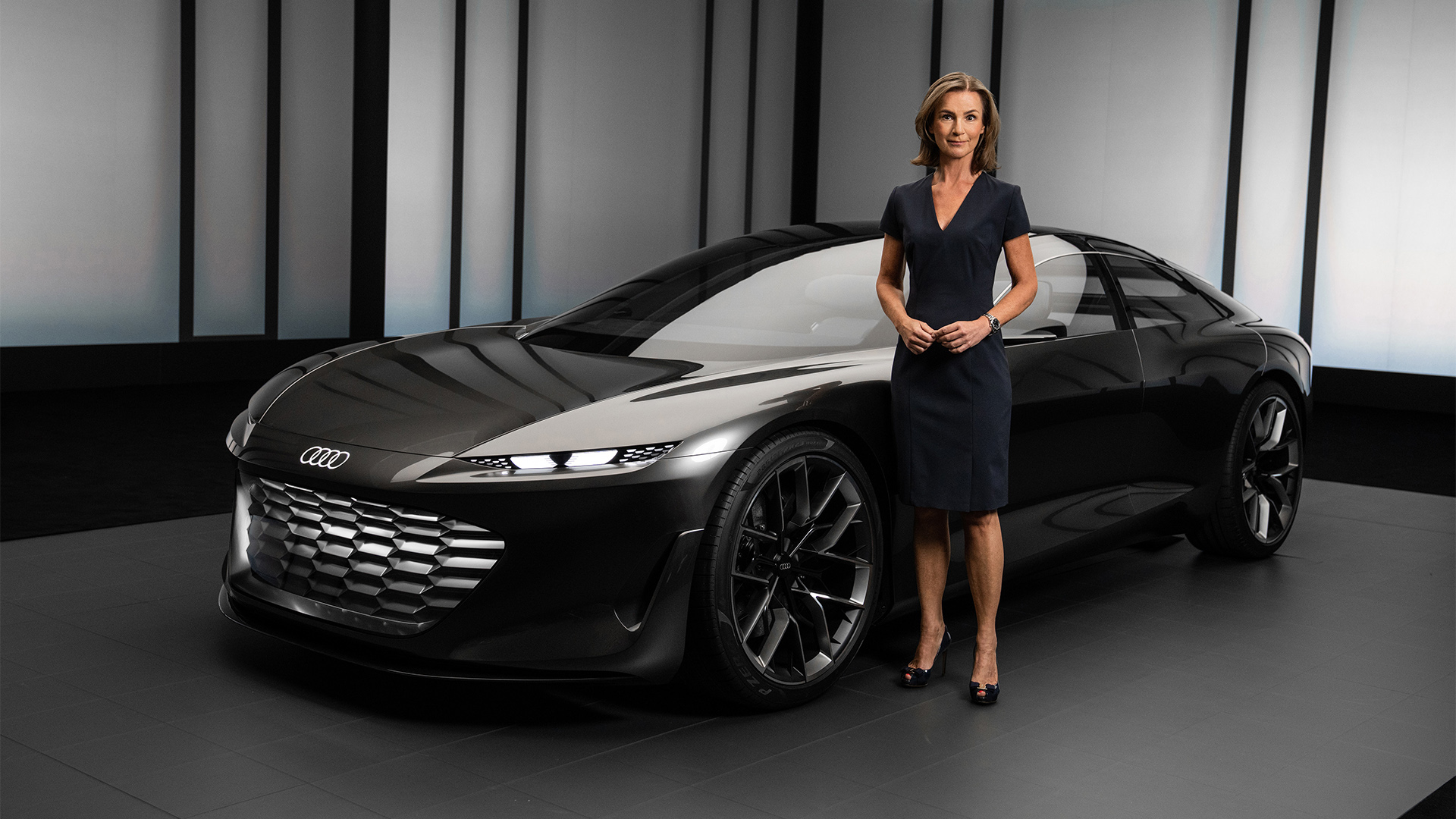Sustainability in electric cars the life cycle of the Audi Q4 e-tron
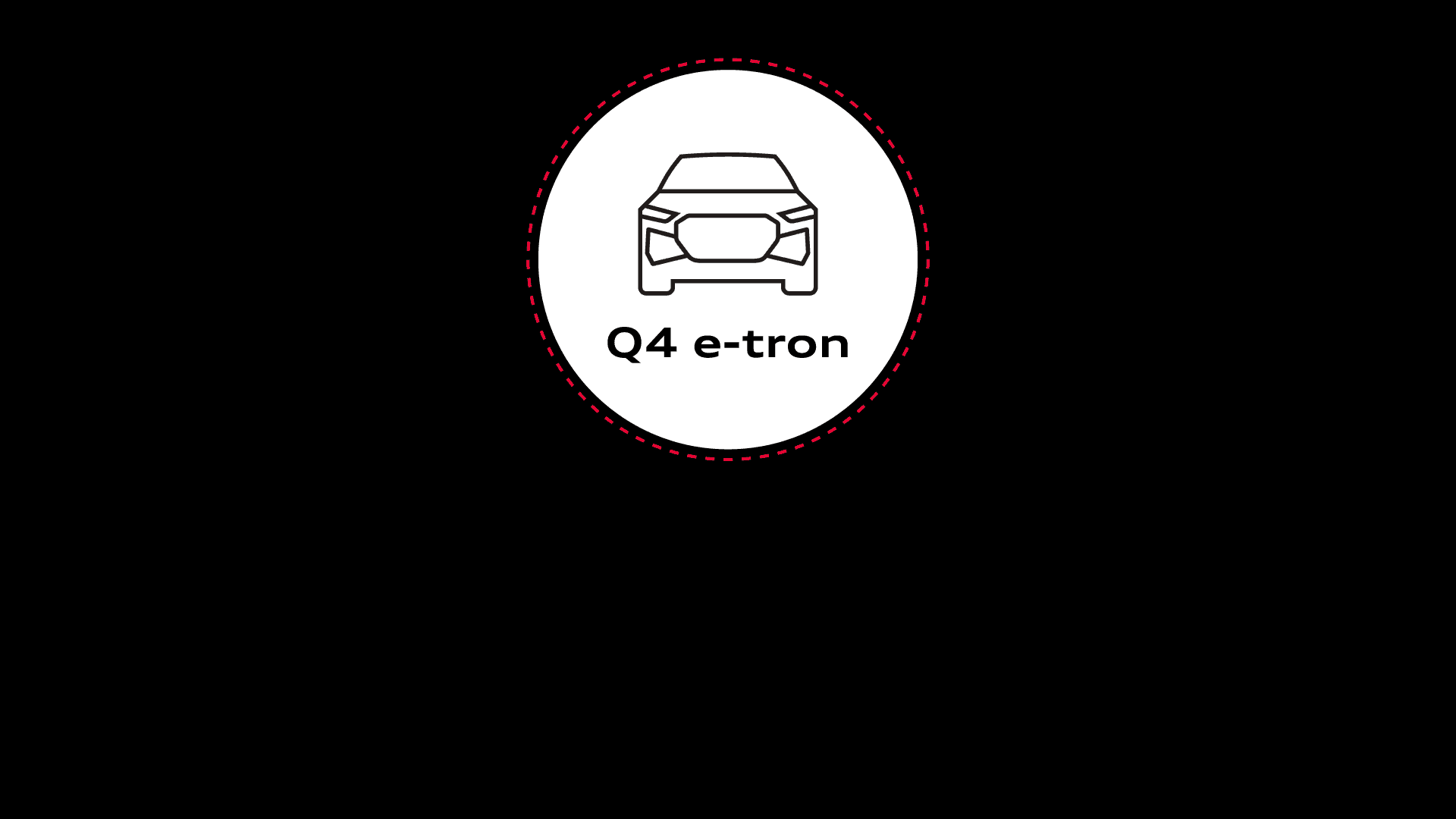

The four phases in the life cycle of an Audi Q4 e-tron.
The four phases in the life cycle of an Audi Q4 e-tron.
Audi takes its products’ entire life cycle into consideration. Using the Audi Q4 e-tron as an example, we can identify four phases:
1. Supply chain, 2. Vehicle production, 3. Utilisation phase, 4. Recycling
Right from the beginning of a vehicle’s life, Audi places a premium on sustainability, which is why it already institutes various measures in its supply chains and at the production stage. A prime example is the use of renewable electricity at the Zwickau production plant in Germany. While the carmaker’s own natural-gas co-generation plant produces some of the required electricity, all energy purchased from external sources is 100 percent renewable.
All CO₂ emissions that cannot be eliminated, despite the measures already in place in the Audi Q4 e-tron supply chain and production, are offset via climate protection projects before the vehicle is handed over to customers at European and U.S. dealerships. That moment signals the start of another key phase in the car’s life cycle — utilisation. As an all-electric vehicle, the Audi Q4 e-tron produces zero direct CO₂ emissions when driving. What’s more, by relying exclusively on green electricity to charge their cars rather than the average energy mix, customers can make a significant dent in their vehicle’s net carbon footprint during the utilisation phase. This is because, in addition to power from green sources, the conventional energy mix also includes electricity generated from non-renewable sources. With that in mind, Audi and Volkswagen dealers offer green energy contracts through Elli in Germany and various utilities in other regions.
When the Audi Q4 e-tron finally reaches the end of its service life, that is by no means the end of the road for the Four Rings and its sustainability efforts. Above all, the battery frequently lends itself to reuse.
Supply chain
Audi sets great store by extensively monitoring its upstream value chain. Top priorities in this regard include CO₂ emissions, sparing resource consumption and social responsibility. To that end, the carmaker’s procurement department employs a variety of measures, such as the Sustainability Rating (S Rating) and the Audi CO₂ supply chain program, to name but two. The S Rating (for more details, go to www.s-rating.audi) serves as a mandatory contract award criterion in evaluating suppliers’ performance in social, environmental and compliance matters. Audi partners exclusively with businesses that can demonstrate how and to what extent they share the Four Rings’ values.
Manufacturing powerful batteries consumes large amounts of energy. That means the supply chain accounts for almost half (about 46 percent) of the total energy required to produce an electric vehicle. The utilisation phase consumes a similar quantity of energy. Thanks to systematic electrification of the Audi model range, the battery’s carbon footprint is also responsible for a significant proportion of the supply chain emissions. Averaged out across the Audi fleet, the supply chain will consequently account for some 25 percent of a vehicle’s total life-cycle emissions in 2025. As early as 2018, the Four Rings initiated the Audi CO₂ program in the supply chain, which lets the carmaker and its suppliers put their heads together in pinpointing ways to curb emissions. For instance, suppliers are contractually bound to use certified green electricity exclusively in the energy-intensive production of the vehicle’s battery cells.
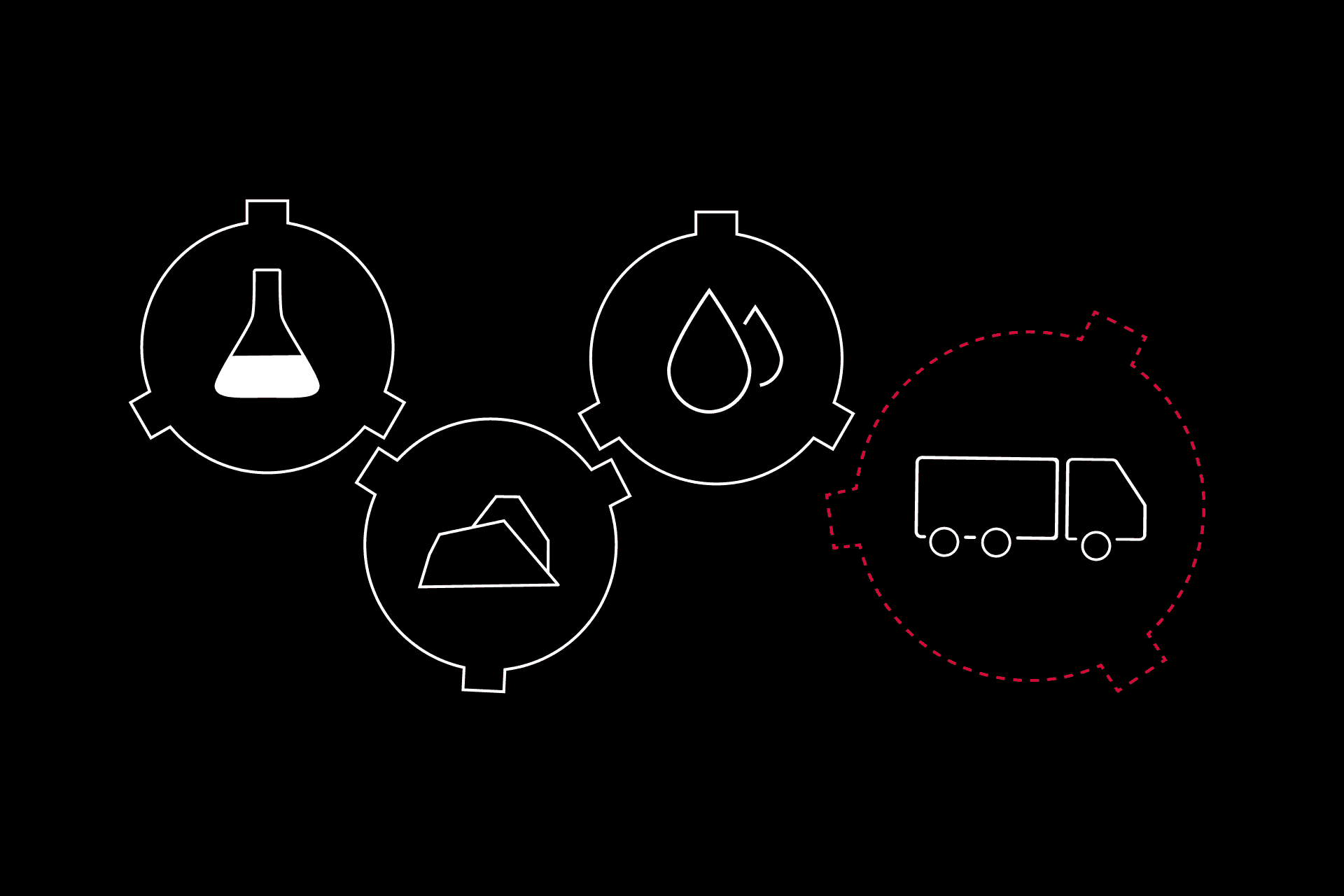

For Audi, systematic sustainability means taking an end-to-end approach to green processes and socially responsible working conditions. Key to achieving this is our far-reaching, global supply chain.
For Audi, systematic sustainability means taking an end-to-end approach to green processes and socially responsible working conditions. Key to achieving this is our far-reaching, global supply chain.
The brand with the Four Rings has also made notable strides in greening the use and processing of a material, which is by nature energy-intensive and consequently associated with high CO₂ emissions. AUDI AG is the first carmaker to have received the Aluminium Stewardship Initiative’s Chain of Custody certification (for more on the ASI, go to aluminium-stewardship.org), recognising that the Audi materials flow chain focuses on maximally sustainable aluminum production in keeping with ASI standards.
What’s more, in order to conserve resources, the carmaker is using recyclates — materials processed from recycled waste — in more and more components. With up to 27 components that contain recycled material, the Audi Q4 e-tron is no exception to this trend. One such exterior component, whose mechanical properties must meet exceptionally high standards, is the assembly carrier. In the interior, recycled materials are used for insulation and damping. Many visible surfaces, including floor coverings and parts of the luggage compartment lining, are similarly made with recycled materials. The Puls fabric, which is combined with artificial leather, is composed of recyclates. For seat trim in this material, a complex process repurposes PET bottles into a yarn. When woven into a fabric, it matches the visual and tactile quality standards of traditional textile upholstery.
Vehicle production
Audi Q4 e-tron production at the Zwickau plant is net carbon neutral1. For example, part of the site’s electrical needs are met by VW Kraftwerk GmbH with Volkswagen Naturstrom — renewable electricity — whose production and origin are certified by TÜV, Germany’s technical inspection association. Hydroelectric power plants, together with wind and solar parks in Germany and its immediate neighbors, are the primary sources for the power. Thanks to its own natural-gas co-generation plant, the Zwickau facility is able to cover the remainder of its electricity requirements. The co-generation plant’s CO₂ emissions as well as the use of natural gas in other manufacturing processes are offset through carbon credits from international projects that meet the Gold Standard’s or Verified Carbon Standard’s exacting criteria.
Constructed in accordance with the new German Buildings Energy Act, Zwickau’s cutting-edge factory halls are equipped with technology capable of automatically regulating electrical, water and heat consumption in line with demand. In the paint shop as well as other areas, technical measures reduce consumption of one of the biggest production resources — natural gas.
Handing over vehicles to dealership customers (EU/U.S.)
Utilisation phase
Once customers take ownership of an Audi Q4 e-tron, they not only get to enjoy a thrilling driving experience but can also choose to ensure that using the vehicle results in virtually no emissions. The proviso is that they always charge the battery with electricity from renewable sources. After all, electromobility is only as green as the electricity it uses. Given that roughly one in two charging cycles is performed at home, Volkswagen subsidiary Elli, for one, offers eco-conscious Audi Q4 e-tron owners in Germany a green solution — electricity generated from 100-percent renewable energy sources.
Owners can also rest assured that the brand with the Four Rings offers solutions for charging their Audi Q4 e-tron cars on long-distance trips. As part of the IONITY joint venture, Audi is helping to create a fast-charging network on highways and freeways in 25 European countries. In the near future, there will be 400 — over 340 are already in operation — ultra-fast charging stations along these main arteries, providing 100-percent renewable electricity.
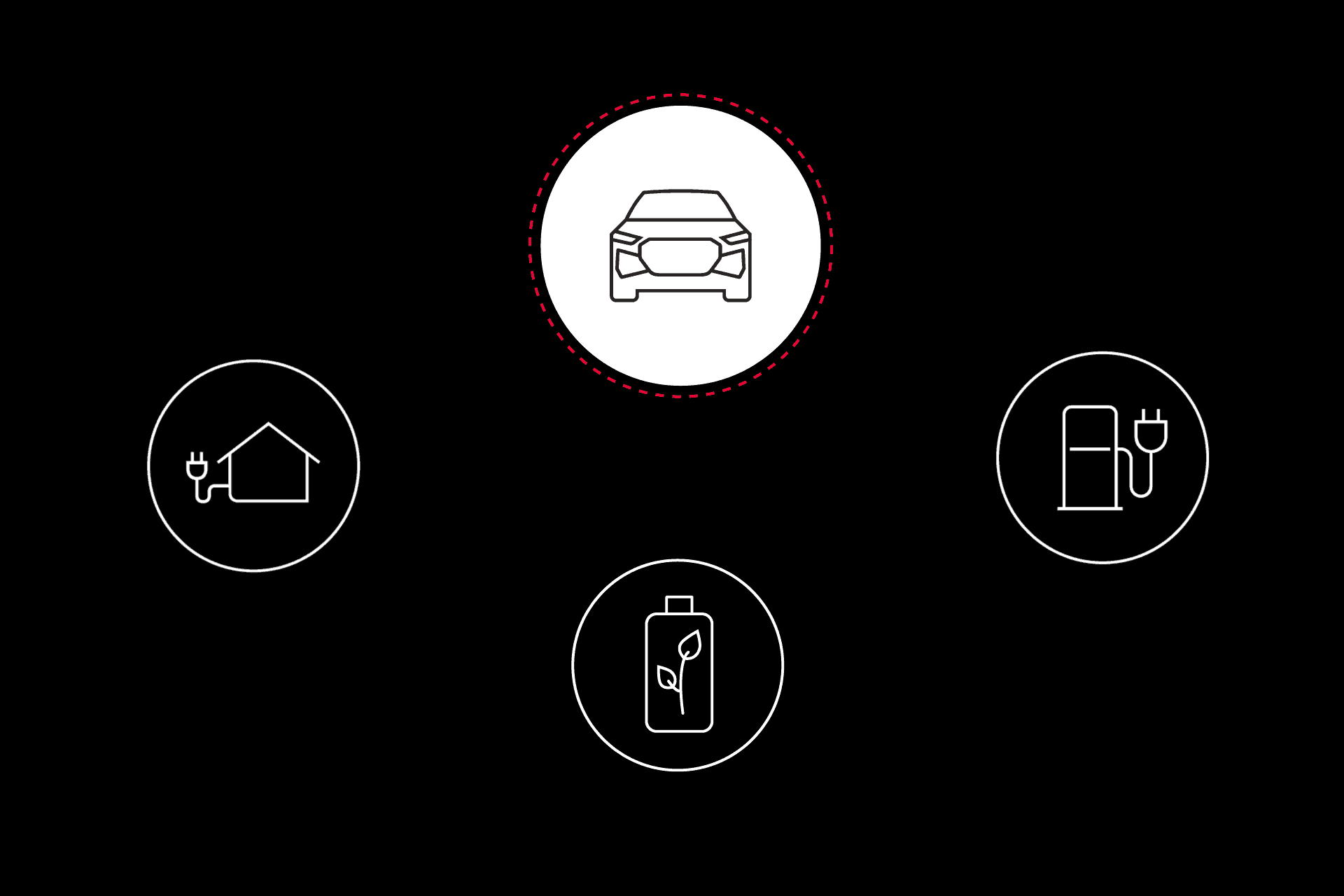

The key to virtually emission-free driving: Recharging exclusively with renewable electricity at home and on the road.
The key to virtually emission-free driving: Recharging exclusively with renewable electricity at home and on the road.
Recycling
When the Audi Q4 e-tron reaches the end of its service life, its battery cells, which can still deliver a high proportion of their original performance, need not be scrapped. This means they can be repurposed to continue storing electricity even after the vehicle is retired. A prime example is the carmaker’s cooperation with the utilities company EnBW to employ used, “second-life” electric car batteries as stationary storage solutions for wind turbines and photovoltaic systems so that these do not have to be disconnected from the grid when there is a temporary surplus in electricity production. What’s more, as an energy source independent of local grid capacities, second-life battery storage can supply the power for fast-charging infrastructure, such as at events.
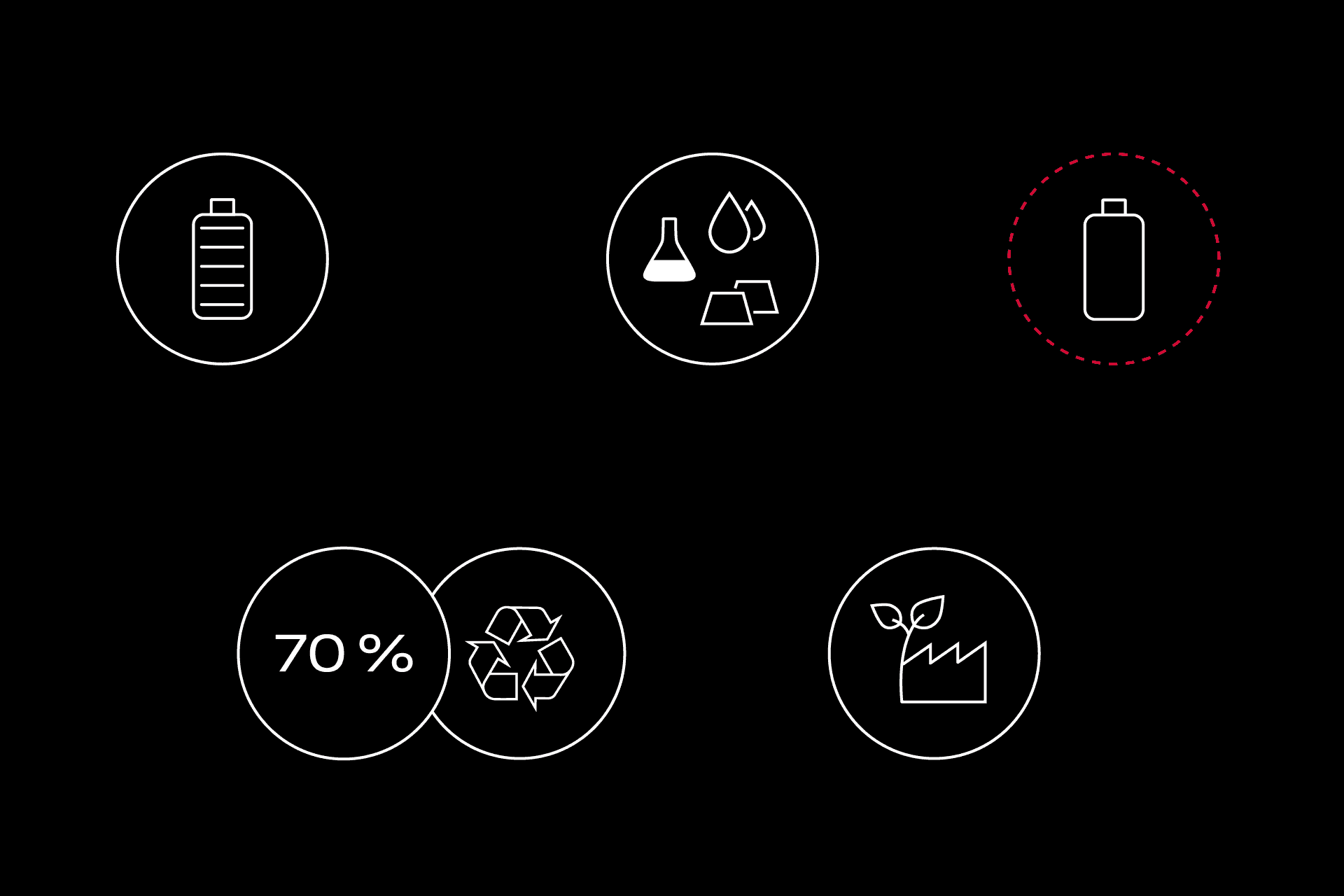

The valuable raw materials in lithium-ion batteries can be recycled to a large extent and reprocessed for new batteries.
The valuable raw materials in lithium-ion batteries can be recycled to a large extent and reprocessed for new batteries.
Only when batteries can no longer perform this task are they recycled using cutting-edge concepts that permit recovery of the individual raw materials for reuse in new batteries. The recycling pilot plant for lithium-ion batteries in Salzgitter, Lower Saxony, is just one facility devoted to this. Thanks to the latest processes, the plant achieves a 70-percent recycling rate for raw materials, including cobalt, lithium, nickel, aluminum, manganese and graphite. In the longer term, an even higher rate of 97 percent is targeted.
